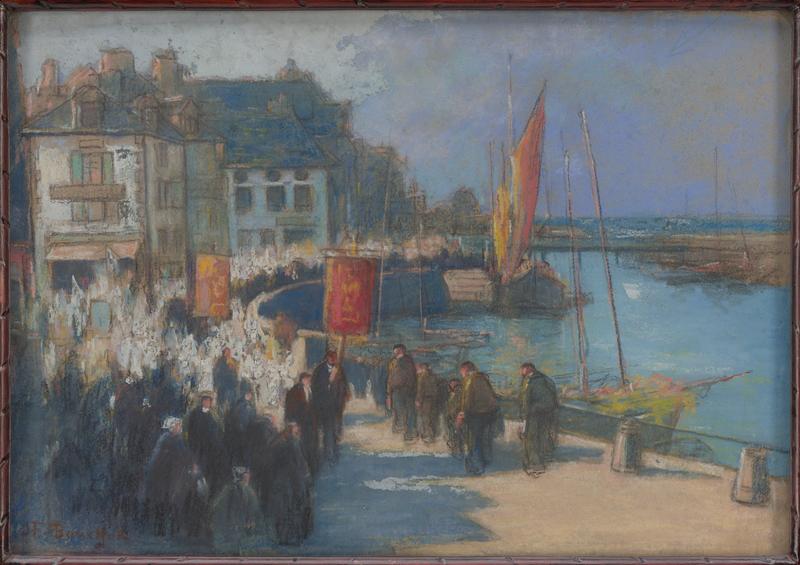
32. Joseph Félix Bouchor, Procession at Le Croisic
| Artist | Joseph Félix Bouchor, French, Paris 1853–Paris 1937 |
| Title, Date | Procession at Le Croisic, not dated |
| Medium | Pastel |
| Dimensions | 11 7/16 × 16 1/8 in. (29 × 41 cm) |
| Inscriptions + Marks | Lower left: J.F. Bouchor |
| Provenance | [Thierry Attanasio, Tableaux Anciens et Modernes, Marché Serpette, Clignancourt, Paris; to Weisberg]; Yvonne and Gabriel Weisberg, Minneapolis |
| Exhibition History | "Reflections on Reality: Drawings and Paintings from the Weisberg Collection," Mia, 2022–23 |
| Credit Line | Promised gift of Gabriel P. and Yvonne M.L. Weisberg, Minneapolis |
Félix Bouchor was mesmerized by life in rural France. At some point, his travels led him to the Breton fishing village of Le Croisic, which he portrayed here in the midst of a local tradition, possibly the Blessing of the Sea or a Pardon. The Pardon, practiced in Brittany for centuries, calls for participants to dress in their finest local costumes—the women’s starched white headdresses here are typical—while processing to, and then elaborately around, a church. Pilgrims honor the church’s patron saint and are granted indulgences to lessen their punishment for sins, hence the word “pardon.”
Bouchor depicted this lively scene in pastel, probably for the freedom the medium allowed. For the scenes he found in Normandy, which he turned into large, Salon-worthy paintings, he made preliminary oil sketches. He was drawn to vistas of fields and farm life, subjects inspired by artists Léon Lhermitte (cat. nos. 114–117), Jules Bastien Lepage, or Julien Dupré. Bouchor based his works on direct observation, an approach being adopted by many other artists of provincial France. These early large works made Bouchor’s reputation. Later, he attracted interest with the poetic mood that permeated his views along the Seine.
GPW